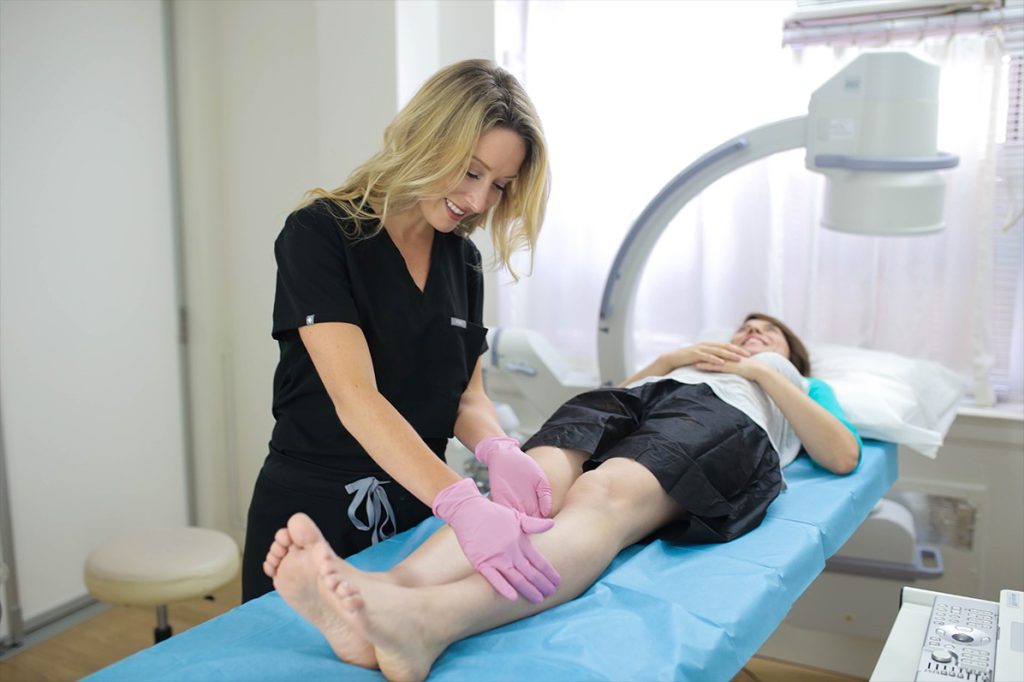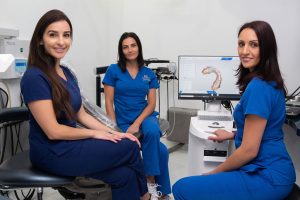The Advantage of Knowing What to Expect at a Vein Clinic
6 min read
A vein clinic is a specialized medical facility focused on the diagnosis and treatment of vein disorders. These clinics are equipped with advanced technology and staffed by professionals who are experts in venous health. Common conditions treated at vein clinics include varicose veins, spider veins, chronic venous insufficiency, and deep vein thrombosis.
Why Visit a Vein Clinic?
Vein issues can range from cosmetic concerns to serious health problems. Varicose veins, for example, are often painful and can lead to complications like ulcers and blood clots. Visiting a vein clinic ensures you receive specialized care that can address these issues effectively. By understanding what to expect at a vein clinic, you can approach your visit with confidence and peace of mind.
Initial Consultation: What Happens First?
The first step in your journey to healthier veins begins with an initial consultation. During this appointment, you will meet with a vein specialist, often a phlebologist or vascular surgeon. The doctor will ask about your medical history, including any symptoms you have been experiencing, such as leg pain, swelling, or visible veins.
Expect a thorough examination of your legs. The specialist may use ultrasound imaging to get a detailed look at your veins and identify any underlying problems. This non-invasive procedure uses sound waves to create images of your blood vessels and is painless and quick.
Discussing Your Symptoms and Medical History
Your specialist will want to know about any symptoms you are experiencing, no matter how minor they may seem. Be prepared to discuss:
- Any pain or discomfort in your legs
- Swelling or heaviness
- Skin changes such as discoloration or ulcers
- Family history of vein problems
Providing detailed information will help the doctor make an accurate diagnosis and develop an effective treatment plan tailored to your needs.
Diagnostic Tests: What to Expect?
After the initial examination, the vein specialist may recommend additional diagnostic tests to gather more information about your condition. These tests can include:
- Doppler Ultrasound: This test measures the direction and speed of blood flow in your veins.
- Venography: A special dye is injected into your veins, and X-rays are taken to show how blood flows through your vessels.
- CT or MRI Scans: These imaging tests provide detailed pictures of your veins and can help identify blockages or other abnormalities.
These tests are generally safe and minimally invasive, providing crucial information that helps guide your treatment plan.
Treatment Options: What Are They?
One of the significant advantages of visiting a vein clinic is access to a wide range of treatment options. Depending on your diagnosis, your specialist may recommend one or more of the following treatments:
- Sclerotherapy: This procedure involves injecting a solution directly into the affected veins, causing them to collapse and eventually disappear. It is commonly used for spider veins and small varicose veins.
- Laser Therapy: This treatment uses focused laser light to target and destroy problem veins. It is non-invasive and often used for smaller veins.
- Radiofrequency Ablation: This minimally invasive procedure uses radiofrequency energy to heat and close off larger varicose veins.
- Endovenous Laser Treatment (EVLT): Similar to radiofrequency ablation, EVLT uses laser energy to close off varicose veins.
- Vein Stripping and Ligation: In more severe cases, surgery may be required to remove or tie off damaged veins.
Each treatment has its own set of advantages and potential risks, which your specialist will discuss with you in detail. The goal is to find the most effective and least invasive option to address your specific condition.
Preparing for Treatment: What Should You Do?
Once a treatment plan is established, your specialist will provide instructions on how to prepare. This may include:
- Avoiding certain medications: You might need to stop taking blood thinners or other medications that could increase bleeding risks.
- Wearing loose, comfortable clothing: This makes it easier to access the treatment area.
- Arranging for transportation: Some treatments, especially surgical ones, may require you to have someone drive you home afterward.
Following these guidelines will help ensure your treatment goes smoothly and reduces the risk of complications.
The Treatment Process: What to Expect?
On the day of your treatment, you can expect the following:
- Check-In: You will check in at the clinic and fill out any necessary paperwork.
- Pre-Treatment Prep: The treatment area will be cleaned, and you may receive a local anesthetic to numb the area.
- The Procedure: Depending on the type of treatment, the procedure can take anywhere from 30 minutes to a few hours. Most treatments are minimally invasive and involve little to no downtime.
- Post-Treatment Care: After the procedure, you will receive instructions on how to care for the treated area. This may include wearing compression stockings, avoiding strenuous activities, and keeping the area clean and dry.
Recovery: What Should You Expect?
Recovery times vary depending on the treatment you receive. Minimally invasive procedures like sclerotherapy and laser therapy typically have short recovery periods. You may experience mild discomfort, bruising, or swelling, which usually subsides within a few days.
For more invasive procedures like vein stripping, the recovery period may be longer. You might need to take a few days off work and avoid strenuous activities for a couple of weeks. Your specialist will provide specific guidelines tailored to your treatment and individual circumstances.
Follow-Up Care: Why Is It Important?
Follow-up care is a crucial part of your treatment journey. Regular check-ups allow your specialist to monitor your progress and ensure that your veins are healing properly. During these visits, you can discuss any concerns or new symptoms you may have.
Your specialist may also recommend lifestyle changes to help prevent future vein problems. These can include:
- Maintaining a healthy weight: Excess weight can put additional pressure on your veins.
- Exercising regularly: Physical activity improves blood circulation and can reduce the risk of vein problems.
- Wearing compression stockings: These garments help support your veins and improve blood flow.
- Avoiding prolonged periods of standing or sitting: Taking breaks to move around can help keep your blood flowing.
Understanding the Benefits and Risks
Every medical treatment comes with its own set of benefits and risks. Understanding these will help you make informed decisions about your care.
Benefits:
- Improved Appearance: Treatments can significantly reduce the appearance of varicose and spider veins, boosting your confidence.
- Reduced Pain and Discomfort: Many treatments alleviate symptoms like pain, swelling, and heaviness in the legs.
- Preventing Complications: Effective treatment can prevent complications such as ulcers, blood clots, and chronic venous insufficiency.
Risks:
- Side Effects: Some treatments may cause side effects like bruising, swelling, and skin discoloration.
- Recurrence: There is a possibility that treated veins may reappear over time.
- Infection: Although rare, there is a risk of infection with any invasive procedure.
Your specialist will discuss these benefits and risks with you in detail, helping you weigh your options and choose the best treatment for your needs.
Why Choose a Vein Clinic?
Choosing a vein clinic ensures you receive specialized care from professionals who are experts in vein health. These clinics are equipped with the latest technology and offer a range of treatments tailored to your specific needs. By understanding what to expect at a vein clinic, you can approach your treatment with confidence, knowing you are in good hands.
Conclusion: Taking the First Step
Taking the first step towards healthier veins begins with a visit to a vein clinic. By knowing what to expect, you can prepare yourself for a successful treatment journey. From the initial consultation to the final follow-up, each step is designed to ensure you receive the best care possible.
Understanding your symptoms, undergoing necessary diagnostic tests, and exploring a range of treatment options will empower you to make informed decisions about your vein health. With the right care and lifestyle changes, you can improve your quality of life and prevent future vein problems.
So, if you’re experiencing vein issues, don’t wait. Schedule a visit to a vein clinic and take the first step towards healthier, pain-free legs.



